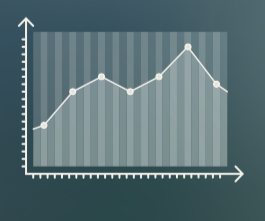11.21.2025
Sausage casings bulletin, November 21, 2025

...

Many are calling 2015 the end of the commodity super-cycle as prices have returned to levels not seen since before the housing bubble run up in 2006 and 2007. Successive years of a good soybean crop, heavy supplies of crude oil, and a weak global economy have all contributed to the downward grind of the market. The macro markets sinking have pressured the animal fats prices lower despite a biodiesel production capacity that is much stronger than it was in the mid-2000s.
BFT topped out at $0.3075 in mid March and stagnated in the high $0.2000 before dropping from $0.2800 on September 25 to $0.1900 on November 13. The market was largely supported by oleochemical demand for much of the year, and with end of year inventory reductions and no biodiesel demand, prices plummeted.
Cattle kills for 2015 are likely to be the lowest in over 50 years. Heavier cattle weights have kept the supply from tightening further, but sources have offered mixed reports on how beneficial the heavier cattle have been for fat production. The lack of supply has led to tight spot trading with only 41 cars of renderer tallow reported all year. These 41 cars were spread between twelve trades, meaning that rendered tallow has traded, on average, once a month in 2015. In reality, renderer tallow did not trade in the months of July or November. Packer tallow has seen better liquidity; 352 cars have traded over 69 instances. While seemingly a big number compared to Q1, 2005 trade totals of 200 cars over 25 instances is relatively small. During that same time period in the year 2005, renderer tallow traded 28 times for a total of a 274 cars.
The year is drawing to a close with some anticipation for strength in 2016. The EPA has upped the biodiesel RVO to 1.9 billion gallons for next year, and many are anticipating a producer’s’ tax credit for the biodiesel industry. The RVO, along with the tax credit, will provide a solid market foundation that the industry hasn’t seen in years. With that stated, a strong dollar will likely continue to keep more commodities in the US, which could limit the price of competing products. The WASDE is predicting soybean oil prices in a range of $0.2750 – 0.3050 for the 15/16 marketing year.
Using the oft referenced, but weakly correlated ratio to SBO, this would put tallow prices anywhere from $0.2250 – $0.3000 for next year based on past ratios to bean oil. Ultimately, chemical demand drives the BFT market, and the state of the economy next year will determine how well that business does. Biodiesel demand in the summer should offer support, and it wouldn’t be surprising to see the market drift above the 100% to SBO mark in late Q2. Prices, however, will be limited by an oil market that analysts say will hover below the $50/bbl market for much, if not all, of the year.